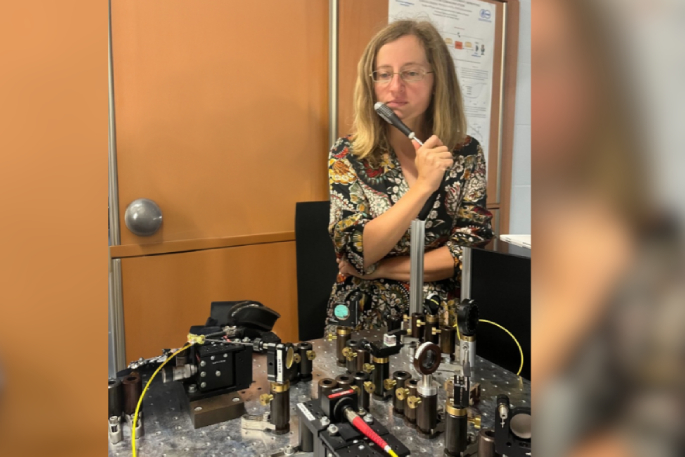Artificial intelligence could help to advance how we monitor eye health by providing sharper images and reducing the need for costly examinations.
Te Whare Wānanga o Waitaha | University of Canterbury Senior Research Investigator in Physics Dr Sylwia Kolenderska aims to use artificial intelligence to make optical coherence tomography more accessible.
OCT is a light-based imaging technique used in ophthalmology.
Expensive to produce, but commonly used by ophthalmologists to assess eye health, OCT creates three dimensional internal images of the eyes, “much like an ultra-sound but with light”, Dr Kolenderska says.
“Right now, if you want to have a high-resolution image the equipment costs are extremely high, making it prohibitive for many researchers and clinicians.”
After considering ways to improve current OCT machines, Dr Kolenderska identified data processing as a problem with the current expensive machines.
“While the image quality is good, you can’t get the image straight away. It must be calculated from raw signals—which creates a bottleneck in these expensive machines.”
With cheaper machines that produce an inferior image quality already on the market, Dr Kolenderska saw an opportunity to improve their data processing, creating an instant and sharper image by using a neural network —an algorithm that learns patterns like a human brain by analysing data— to replace the standard algorithms for OCT image calculation.
“We can take a cheaper machine with a worse resolution and apply our own technology, much like a software update, to make low resolution data into a high-resolution image comparable to the very expensive OCT machines.
“In the future it could be made into a hardware and attached to an OCT machine like a USB stick,” Dr Kolenderska says.
“AI is perfect for finding relationships between one set of data and another, making it a much more robust data interpreter and therefore enhancing the process of image calculation.
“We believe the image will be up to six times better than the current images.”
Dr Kolenderska and her team have recently been accepted to attend the prestigious Computer Vision and Pattern Recognition 2024, regarded as one of the important events in this field, Dr Kolenderska and her team are one of only ten Aotearoa New Zealand teams to be in the CVPR 41 year history.
To advance OCT imaging, Dr Kolenderska was awarded a $999,999 Smart Ideas grant in the 2023 Ministry of Business, Innovation and Employment Endeavour Fund investment round.



0 comments
Leave a Comment
You must be logged in to make a comment.